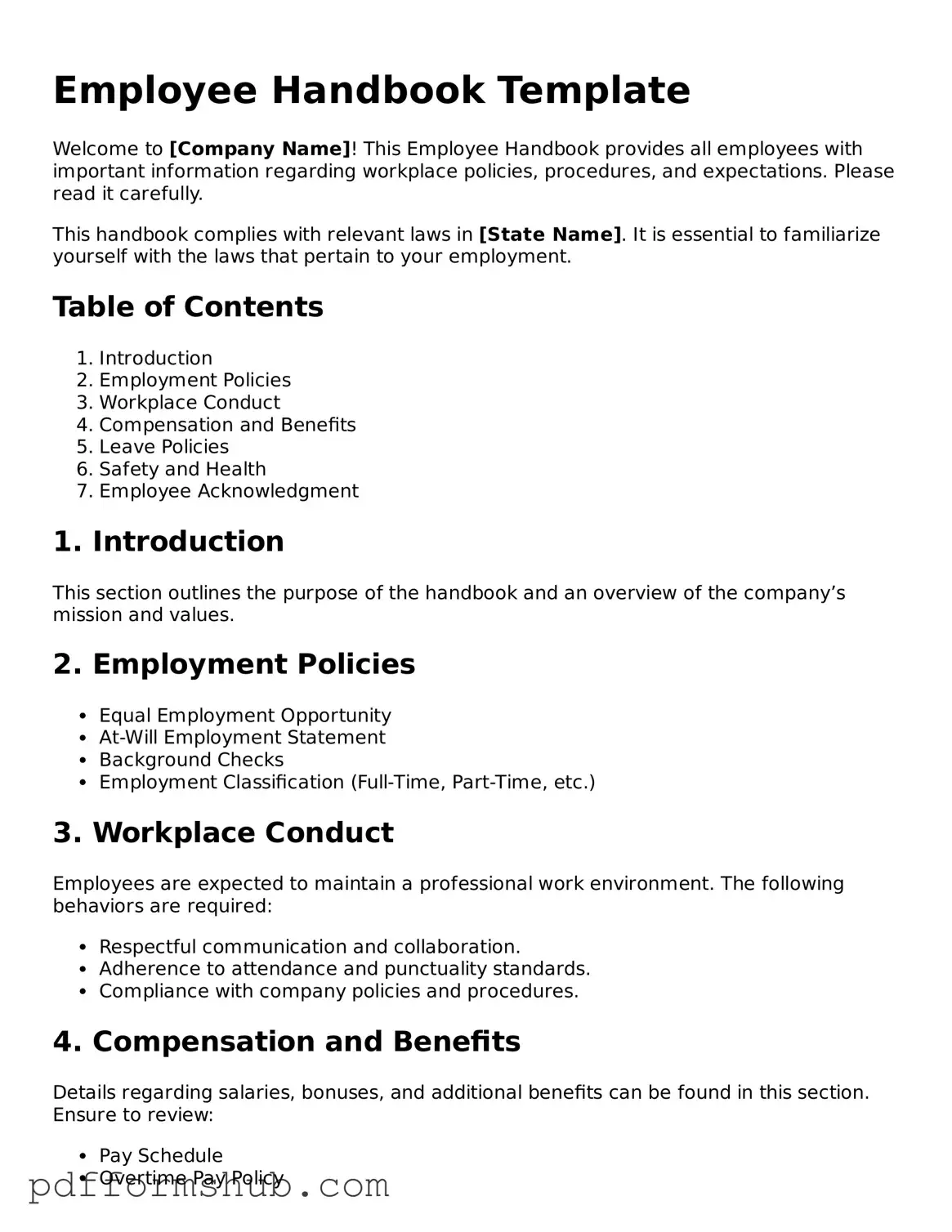Creating an Employee Handbook is an essential step for any organization, as it serves as a vital resource for both employers and employees. This document outlines the company's policies, procedures, and expectations, helping to foster a clear understanding of workplace culture and standards. Within the handbook, you will find sections detailing employee rights and responsibilities, workplace conduct, benefits, and safety protocols. Additionally, it often includes information on the company's mission, vision, and values, which guide daily operations and decision-making. By providing clarity on these important aspects, the Employee Handbook not only protects the organization legally but also promotes a positive and productive work environment. Ensuring that employees have access to this information can lead to better communication and fewer misunderstandings, ultimately contributing to a more harmonious workplace.
